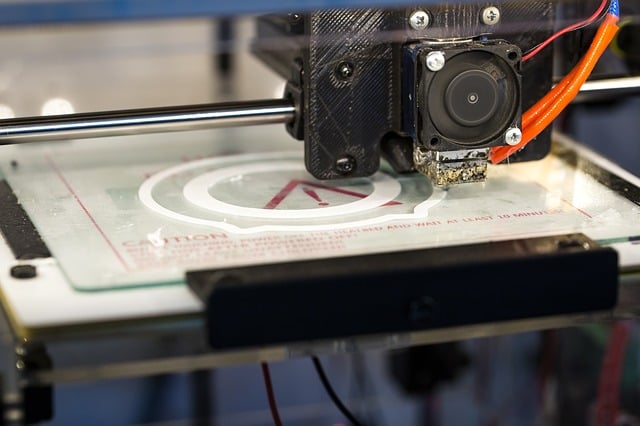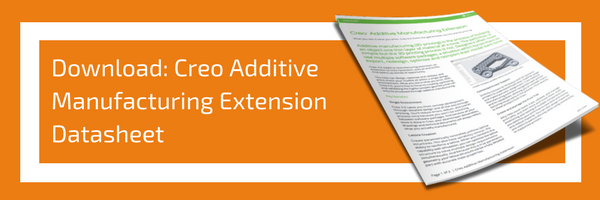 Additive manufacturing is a process where 3D design data is used to manufacture a component by layering up a depositing material. Increasingly, it's being used synonymously with 3D printing.
Additive manufacturing is a process where 3D design data is used to manufacture a component by layering up a depositing material. Increasingly, it's being used synonymously with 3D printing.
Typically, multiple software packages are often required to make additive manufacturing a reality, which results in designers having to export, redesign and optimise - costing time and resource. However, the Creo 4.0 Additive Manufacturing extension resolves these issue.
For anyone interested in learning more, here are the five key benefits of additive manufacturing for product designers
1. From concept to print: a single environment
Additive manufacturing is at its best when it reduces the time taken to realise a new design. This is why projects involving highly complex geometry are most likely to be constructed via additive methods in the modern age.
With systems like Creo 4.0, you can design, optimise and print-check models all from one design environment. This gives back time that would otherwise be lost to dealing with multiple systems and which can instead be reinvested in the creation and optimisation process.
2. Parametric perfection: simple lattice creation
With additive manufacturing, designers can create parametrically-controlled uniform lattice structures and gain variability control, enabling them to reinforce the lattices themselves.
By combining the above capability with simulation, additive manufacturing allows manufacturers to optimise lattice structures to solve several design requirements in one go.
It’s a highly accurate process, too, thanks to the inclusion of true parametric geometry, which provides lattice structures with fully-detailed mass properties.
3. Full printer support: connecting devices and protecting investments
There are usually many devices involved in 3D printing, and additive manufacturing enables designers to use the full capabilities of each printer to identify potential manufacturing issues early on.
By understanding build time, material and colour assignment and material usage, manufacturers will derive an enormous amount of actionable data from their hardware investments.
4. Stop repetition: fully-managed print jobs
There’s nothing worse (or more costly) in manufacturing than having to revisit the same task, time and time again. With additive manufacturing, teams can build, track, validate and manage each print job and store them for future use.
The print tray itself can also be optimised thanks to auto positioning and nesting of multiple components. This saves time, money and reduces material wastage.
5. Get yourself connected: service bureau integration
Creo 4.0 can be connected directly to the i.materialise service bureau, which provides access to over one-hundred metals and finishes.
With this connection, designers who opt for additive manufacturing methods can instantly see the visual and financial impact of their models, enabling them to make informed design decisions.
Combined with the rapid prototyping offered by 3D printing, it’s now possible to create models that more closely match the final product than ever before, thus making testing far more relevant.
Additive manufacturing is changing how products are designed, build and optimised. And, while we’ve only scratched the surface above, the features contained within the Creo 4.0 Additive Manufacturing extension will quickly deliver a tangible return for your organisation.
